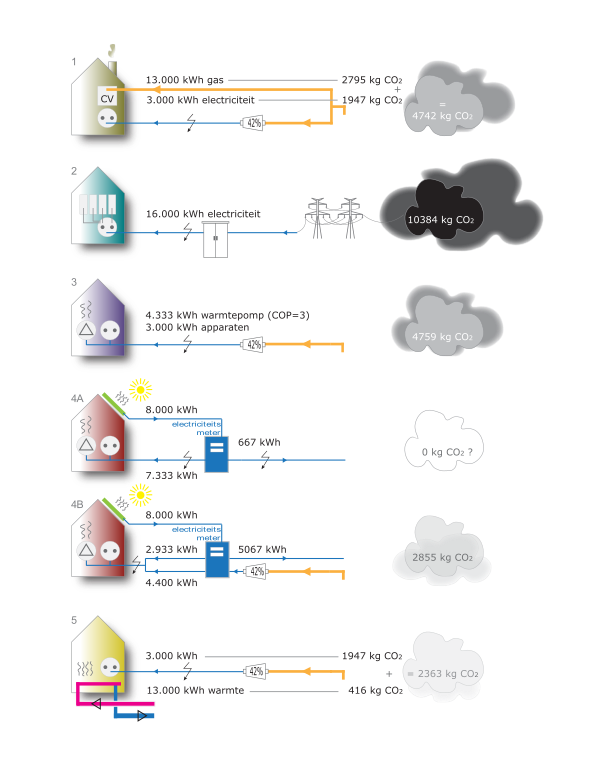How sustainable is electric heating?
The gas industry is being phased out and the trusty gas boiler will need to be replaced by electric forms of heating. Energy epidemiologist Prof. Laure Itard (Architecture and the Built Environment) calculated the CO2 emissions. Is electric always sustainable?
“There is still a long way to go to achieve 100% renewable electricity production and much research is required into the best options for replacing gas,” says Itard. There are many different options available, she says, such as a district heating network fed with deep geothermal energy, thermal energy storage or residual heat. A user can increase the temperature as required using a heat pump, or maintain a basic temperature in the home and boost it locally with infrared panels. The best option for each case in terms of investment, operating costs and CO2emissions is a tricky puzzle, made more complicated by the lack of seasonal storage for heat or electricity.

© Genevieve Rietveld
1. The baseline is a modern, fairly well-insulated home of 120 m2with balanced ventilation (ventilation with heat recovery) and a roof of 60 m2. If the heat demand is 8000 kWh for heating and 5000 kWh for hot water, and electricity consumption is 3000 kWh, the total emissions amount to 4742 kg of CO2per year (see baseline figures).
2. We install a gasless system with electric heaters and boilers. Electricity consumption increases to 16,000 kWh, equivalent to 16,000 x 0.649 (average emissions of the Dutch energy mix) = 10,384 kg of CO2per year, more than double the baseline (219%).
3. We purchase an (expensive) heat pump with a coefficient of performance (COP) of 3, decreasing the electricity demand for heating and hot water by a factor of 3 (4333 kWh). Total electricity consumption is then 7333 kWh, equivalent to 4759 kg of CO2per year and approximately equal to the baseline (100%).
4. We install solar panels too. The total production is 8000 kWh per year, of which 7333 is used by the household and 667 kWh is fed back to the grid. Is the home now CO2free? Unfortunately not. The mismatch between summer production and winter consumption means that about 40% of the electricity is obtained from the sun and 60% from the grid. In this case this is 0.6 x 7333 = 4400 kWh, equivalent to 2855 kg of CO2per year (62%).
5. We are hooked up to a district heating network. Because this is waste heat, the CO2emissions are low: 0.032 kg/kWh. The electricity consumption is 3000 kWh, equivalent to 1947 kg of CO2, so a total of 2363 kg of CO2emissions (50%).
Baseline figures: 1 kWh gas = 0.113 m3; 1 kWh gas = 0.215 kg of CO2; 1 kWh of electricity = 0.649 kg of CO2; electricity generation efficiency = 0.42. The proportion of renewable energy is 6.6% in the Dutch energy mix. Waste heat produces 0.023 kg of CO2per kWh.